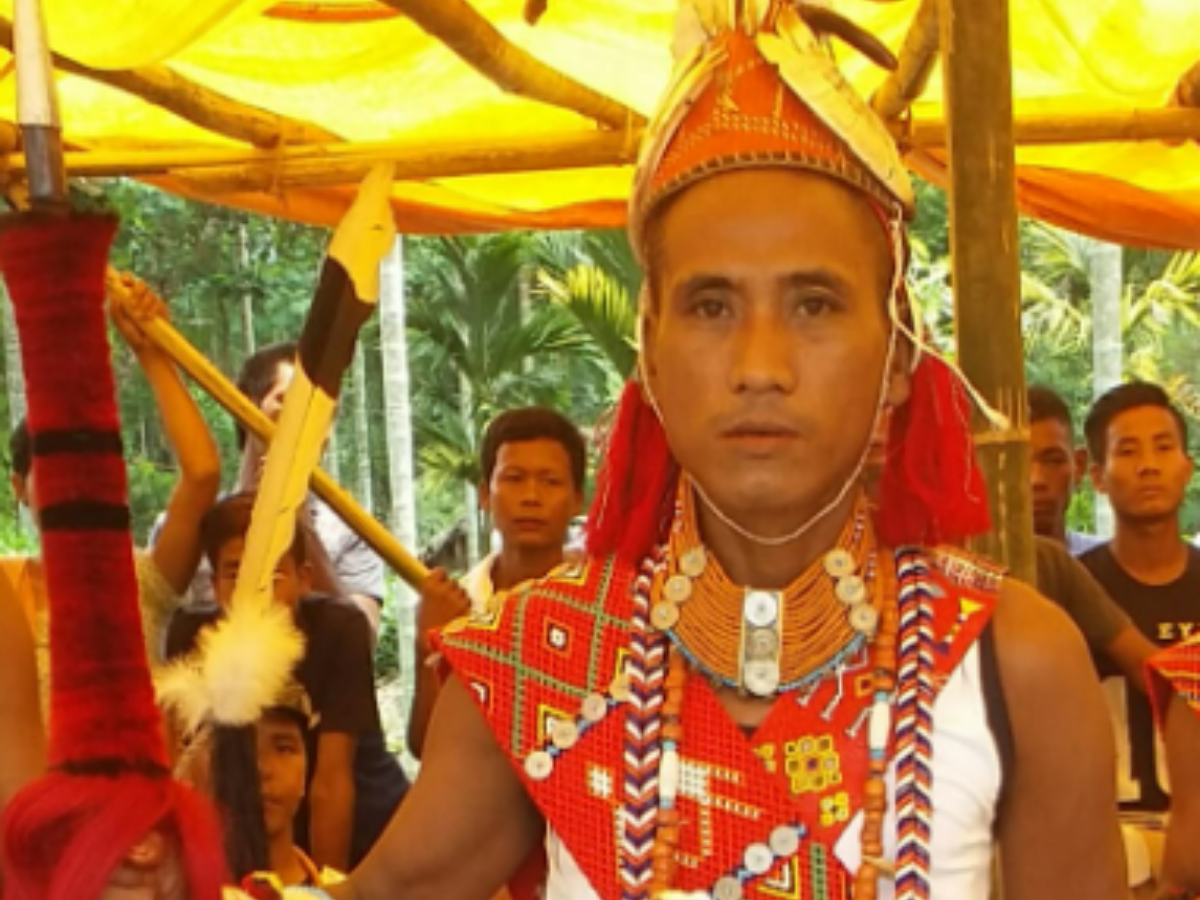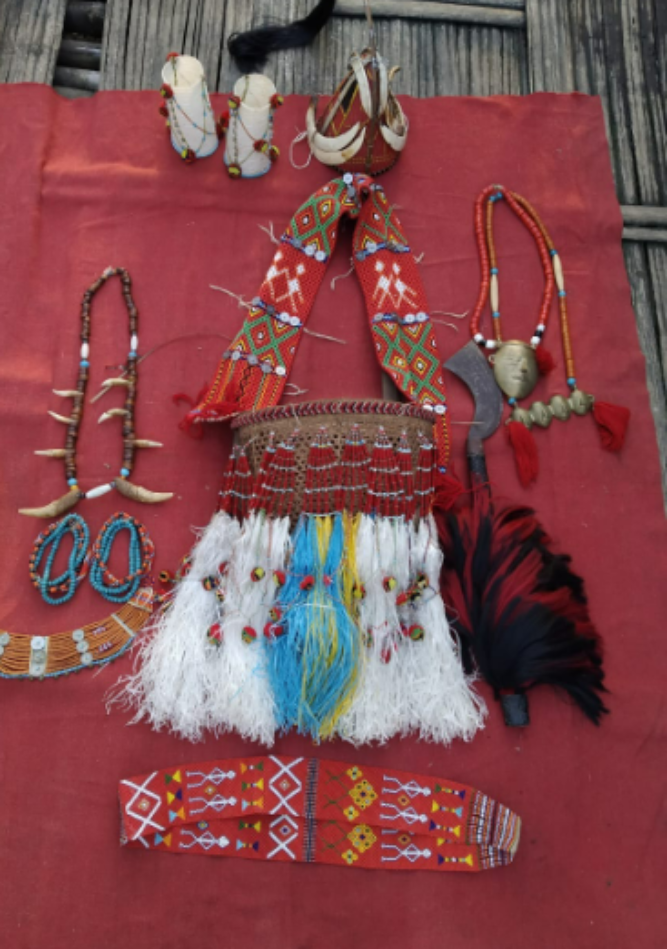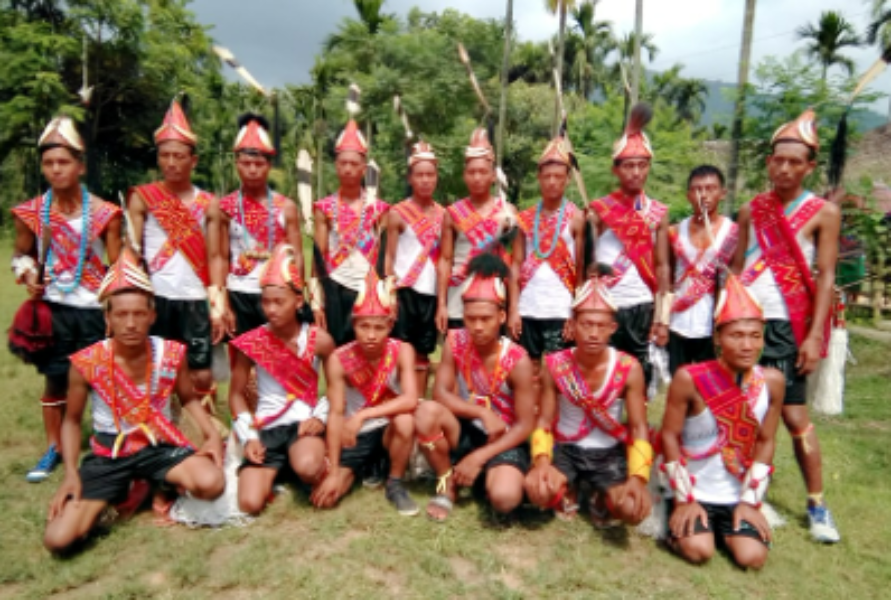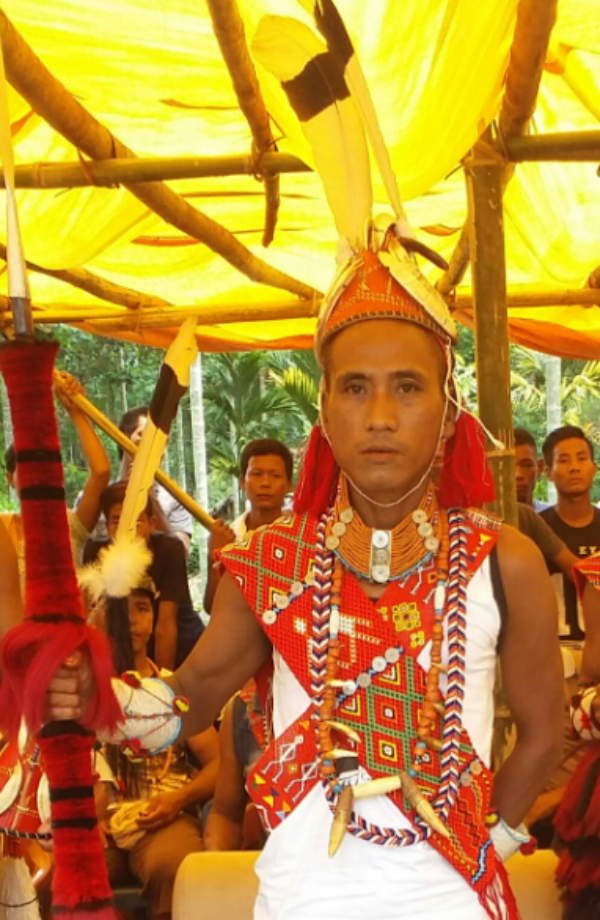State
Tribe Name
Art Type
short description
Konyak man attires are simple, yet significant: they consist of a wrap-around kilt worn by the man and a shawl in white, black, blue, and reddish-yellow. Shawls are stitched from multiple woven pieces and embellished with conch shells, beads, and/or cowries for attractiveness.
Thumbnail

Filter Postion
Left
Filter Background
Off
Theme
Filter Header Image

content
Image

description
onyak man attires are simple, yet significant: they consist of a wrap-around kilt worn by the man and a shawl in white, black, blue, and reddish-yellow. Shawls are stitched from multiple woven pieces and embellished with conch shells, beads, and/or cowries for attractiveness.
Paa pao nyi (shawl for all men) is a simple shawl; it is worn at the Morung (men's dormitory). Nyenyu-nyedup (big silk shawl) and Chon-nye (silk shawl) signified status and were reserved for the wealthy. At age 16, a boy receives a Khiya-hit (loincloth) signifying adulthood at the Khia-Tham ceremony.
Paa pao nyi (shawl for all men) is a simple shawl; it is worn at the Morung (men's dormitory). Nyenyu-nyedup (big silk shawl) and Chon-nye (silk shawl) signified status and were reserved for the wealthy. At age 16, a boy receives a Khiya-hit (loincloth) signifying adulthood at the Khia-Tham ceremony.
Image Mode
landscape
Image

description
The khohom (headdress) is symbolic of courage and social class, made of bamboo or rattan, accented with boar's tusks, and horbill feathers. The elaborate hornbill feather headdress was designated for use by village chiefs, and only warriors were permitted to use the headdress. Tattoos and cross-marked shawls rendered the warrior status and distinguished a warrior's battles.
Image Mode
landscape
Image

description
Traditional Konyak motifs include the Mük, which symbolizes rest and seed preservation; the eye symbol, or the Müktarpe, or ‘arrow’ for representing goal and focus. The waistcoat or vest adorned with two parallel bands has gained popularity in contemporary situations as part of Konyak men's attire and included abstract geometric patterns of lozenges, stripes, and cross marks, among others, to their distinct cultural identity.
State-led initiatives are today promoting Konyak textiles and beadwork through training centers in Mon district. Konyak Naga dress continues to be a living expression of cultural heritage in Nagaland.
State-led initiatives are today promoting Konyak textiles and beadwork through training centers in Mon district. Konyak Naga dress continues to be a living expression of cultural heritage in Nagaland.
Image Mode
landscape
promoted
On
Verified
Off
